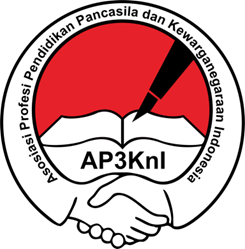The Effectiveness of Using Code Switching in Teaching English on Higher Education
DOI: https://doi.org/10.26618/jed.v8i1.9026
Code Switching, Teaching English, Higher Education
Abstract
The occurence of using code switching in classroom appears for lecturer to explain topic, it also uses English-Indonesia, the students are difficult to understand when lecturer speaks English. The problem appears for students because of the difficulties to say something. This study aims to determine the factors that influence the use of code switching and the types of code switching used in learning English. The research method is descriptive qualitative. Collecting data by means of interviews, observations and video recordings. Data analysis is used to analyze information related to the use of code switching Indonesian English conversation. The participants of this study were two teachers who had experience of code switching while teaching. This study found five reasons teachers use code switching in teaching and learning English: discussing specific topics, making teaching and learning more practical, managing classes, building social relationships, and encouraging active student participation. From observations found three types of code switching used by teachers. The results showed that the use of code switching in learning English found 3 types of code switching, namely; (1) inter-sentential code switching occurred in 580 data (58%), (2) intra-sentential code switching occurred in 300 data (30%), and (3) Tag-code switching occurred in 127 data (12%). The factors behind the use of code switching in learning English are structural linguistic factors, internal psycholinguistic factors, and external social factors. The most dominant factor behind the occurrence of code switching is the structural linguistic factor, namely students do not master English. The teacher applies code switching to facilitate students to more easily understand the material being presented.
References
Al Abdely, A., Al Heeti, N., & Al Abdely, A. A. (2016). Types and Functions of Code-Switching in the English Language Used by Iraqi Doctors in Formal Setting. Ijarr, 1(8), 10–18. Retrieved from https://www.researchgate.net/publication/306031490
Ansar, A. F. (2017). Code Switching and Code Mixing in Teaching-Learning Process. English Education: Jurnal Tadris Bahasa Inggris, 10(1), 29–45. Retrieved from https://ejournal.radenintan.ac.id/index.php/ENGEDU
Becker, R. R. (2001). Reading Horizons: A Journal of Literacy and Language Arts The ABE/GED Classroom: The Crucial First Night, 42(2). Retrieved from https://scholarworks.wmich.edu/reading_horizons
Brown, K. (2006). Encyclopedia of language & linguistics. United Kingdom.: Oxford: Elsevier.
Caballero, N., & Celaya, M. L. (2022). Code-switching by primary school bilingual EFL learners: a study on the effect of proficiency and modality of interaction. International Journal of Bilingual Education and Bilingualism, 25(1), 301–313. https://doi.org/10.1080/13670050.2019.1671309
Holmes, J. (2013). An Introduction to Sociolinguistic. LOndon and New York: Routledge Taylor and Francis Group.
Ibrahim, E. H., Shah, M. I., & Armia, N. T. (2013). Code-switching in English as a foreign language classroom: teachers’ attitudes. English Language Teaching, 6(7), 139–150. https://doi.org/https://doi.org/10.5539/elt.v6n7p139
Kultsum, H. N., & Syamsudin, O. R. (2021). Code Switching and Code Mixing in Efl Class At Homeschooling Khalifah. INFERENCE: Journal of English Language Teaching, 4(1), 27. https://doi.org/10.30998/inference.v4i1.8969
Kumar, T., Nukapangu, V., & Hassan, A. (2021). Effectiveness of Code-Switching in Language Classroom in India at Primary Level: A Case of L2 Teachers’ Perspectives. Pegem Egitim ve Ogretim Dergisi, 11(4), 379–385. https://doi.org/10.47750/pegegog.11.04.37
Lestari, I. (2013). Pengembangan Bahan Ajar Berbasis Kompetensi. Padang: Akademia Permata.
Lestariningsih, F. E. (2019). THE EFFECT OF CODE SWITCHING ON ENGAGING NON-ENGLISH MAJOR STUDENTS Fransisca. International Journal of Indonesian Education and Teaching, 3(1), 128–136. https://doi.org/https://doi.org/10.24071/ijiet.v3i2.1716
Muin, A. (2011). Code Switching as Communication Strategy, XI, 264–277.
Murtiningsih, S. R., Munawaroh, M., & Hidayatulloh, S. M. M. (2022). Code-switching in EFL classrooms: factors influencing teachers to use code-switching and its types used in the classrooms. Journal on English as a Foreign Language, 12(2), 318–338. https://doi.org/10.23971/jefl.v12i2.3941
Panayi, N. (2015). Code Switching in EFL Environment. Linguistics and Literature Studies, 3(6), 259–263. https://doi.org/DOI: 10.13189/lls.2015.030601
Piantari, L. L. (2011). Alih Kode (Code-Switching) Pada Status Jejaring Sosial Facebook Mahasiswa. JURNAL Al-AZHAR INDONESIA SERI HUMANIORA, 1(1), 12. https://doi.org/10.36722/sh.v1i1.19
Poplack, S. (1980). Multilingualism is a state whereby an individual has access to two or more linguistic codes as a means of communication.
Sabty, C., Mesabah, I., Çetinoğlu, Ö., & Abdennadher, S. (2021). Language Identification of Intra-Word Code-Switching for Arabic – English, 12.
Sugiyono. (2017). Metode Penelitian Kuantitatif, kualitatif dan R&D. Bandung: Alfabet.
Wardhaugh. (2010). An Introduction to Sociolinguitics. United Kingdom.: Blackwell.
Wray, Allison., Trott, Kate., and Bloomer, A. (2001). Project in Linguistics;A Practical Guide to Research Language. London: Edward Arnold.
Yarahmadi, P. (2016). The Effect of Code-Switching on the Improving of Speaking Skill, 100, 43557–43567.
Younas, M., Afzaal, M., Noor, U., Khalid, S., & Naqvi, S. (2020). Code Switching in ESL Teaching at University Level in Pakistan. English Language Teaching, 13(8), 63. https://doi.org/10.5539/elt.v13n8p63
Younas, M., Afzaal, M., Noor, U., Khalid, S., & Naqvi, S. (2020). Code Switching in ESL Teaching at University Level in Pakistan. English Language Teaching, 13(8), 63. https://doi.org/10.5539/elt.v13n8p63



